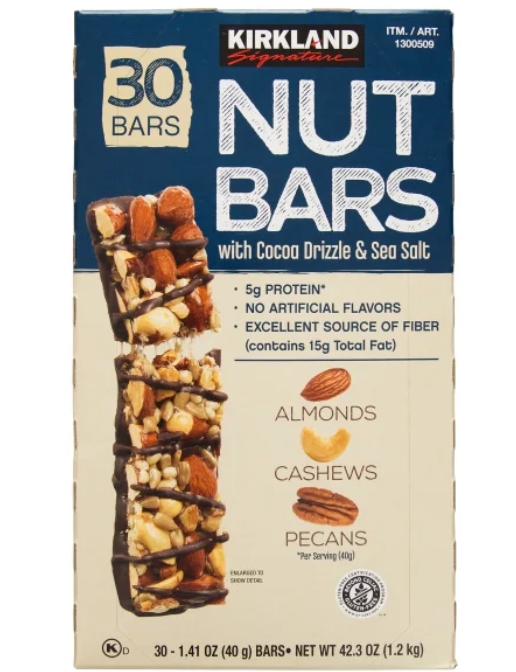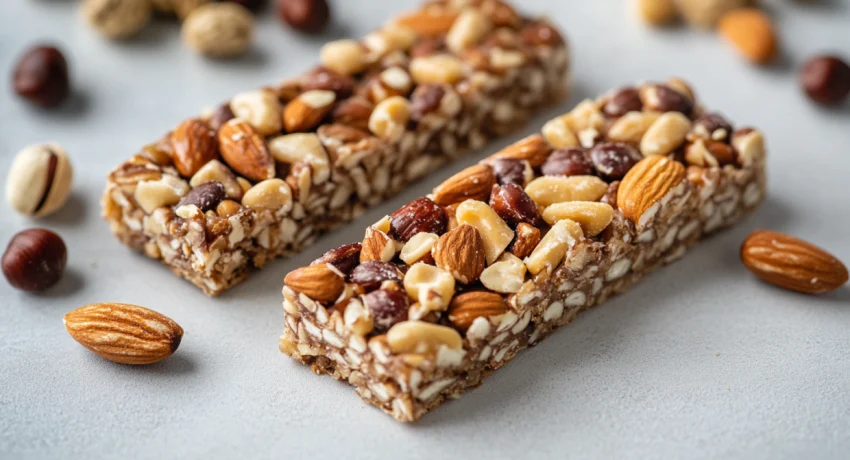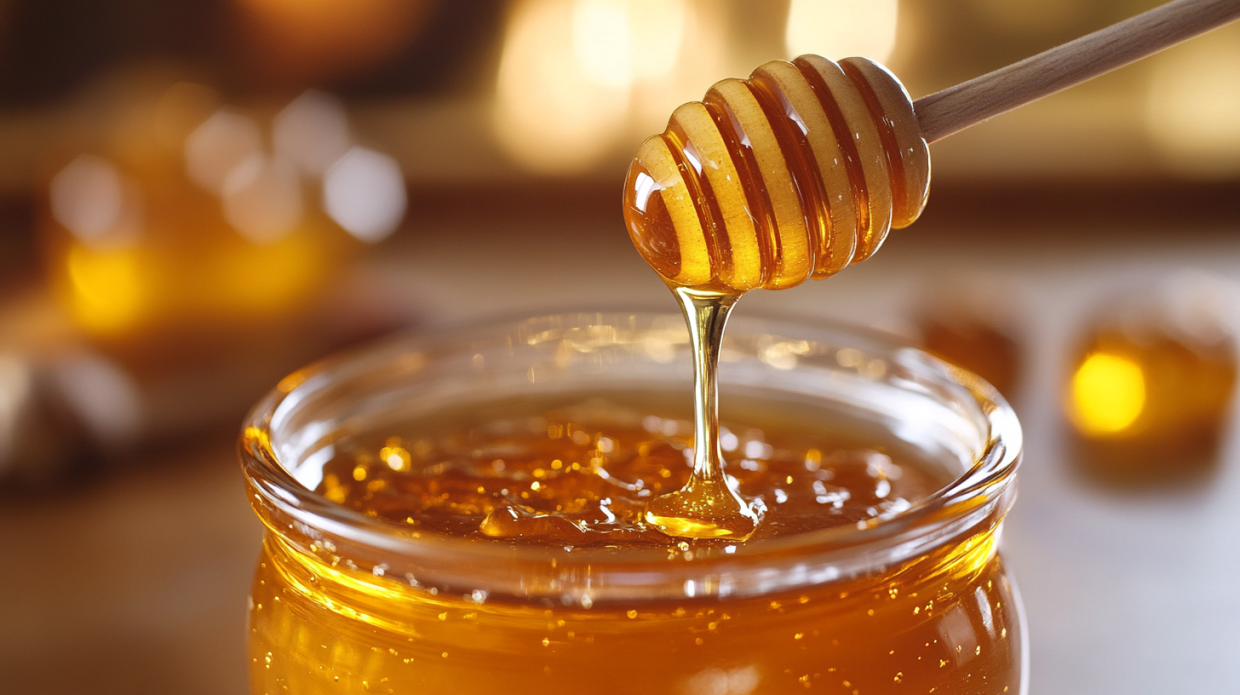
Kirkland Signature Nut Bars, 1.41 oz, 30-count
- Kosher
- Gluten Free
- No Artificial Flavors
- Product of USA
A Deep Dive into Costco’s Beloved Nutty Treat: Nutrition, Value, and Everything In Between
In a world of endless snack options, finding something that balances taste, nutrition, and affordability can feel like searching for the holy grail. Enter Kirkland Nut Bars—those rectangular parcels of nutty goodness that have earned a devoted following among Costco shoppers. But what exactly makes these humble bars so special? Are they truly the nutritional powerhouses they appear to be? And how do they stack up against pricier competitors?
Today, we’re going to unwrap everything there is to know about Kirkland Nut Bars, the budget-friendly nutritional powerhouses that deserve a place in every pantry. From ingredients to cost comparison, flavor varieties to dietary compatibility, this comprehensive guide aims to answer all your burning questions about these popular snacks.
The Anatomy of a Kirkland Nut Bar: What’s Really Inside?
Let’s start with the basics: what exactly are you putting into your body when you tear open that wrapper? Kirkland Nut Bars pride themselves on a relatively straightforward ingredient list, which is refreshing in an era of unpronounceable additives.
The core ingredients include a variety of nuts (typically almonds, peanuts, cashews, and pecans), dried fruits like cranberries or cherries, and binding agents such as tapioca syrup, rice flour, and honey. Depending on the variety, you might also find chocolate, coconut, vanilla extract, or sea salt in the mix.
What’s notably absent from many varieties is just as important as what’s included. Many Kirkland Nut Bars contain no artificial preservatives, focusing instead on natural ingredients that provide both flavor and function. The bars rely on the natural preservative qualities of honey and dried fruits, allowing them to maintain freshness without chemical intervention.
The ingredient list varies slightly between flavors, but the emphasis remains on nuts as the star of the show. In fact, nuts typically make up more than 60% of each bar, giving them their satisfying crunch and nutritional profile. This nut-forward approach differentiates Kirkland bars from some competitors that use nuts more as an accent than a foundation.
Nutritional Breakdown: Are Kirkland Nut Bars Actually Good For You?
Nutrition labels can be confusing, so let’s break down what you’re getting with each Kirkland Nut Bar.
On average, a single bar contains:
- 190-210 calories
- 12-16g of fat (mostly the healthy unsaturated kind from nuts)
- 6-10g of protein
- 13-17g of carbohydrates
- 5-9g of sugar (varying by flavor)
- 3-5g of fiber
- Various micronutrients including magnesium, vitamin E, and potassium
The high protein content is particularly noteworthy, especially compared to many other grab-and-go snacks. This protein, derived primarily from the nut blend, helps create that satisfying fullness that can prevent overindulgence later.
The fat content might seem alarming at first glance, but it’s important to recognize that these are predominantly healthy fats. The monounsaturated and polyunsaturated fats found in nuts have been linked to improved heart health and reduced inflammation. Still, the calorie density means these bars are best enjoyed as a mindful snack rather than mindless munching.
Sugar content is always a consideration in packaged foods. While Kirkland Nut Bars do contain added sugars in the form of honey and tapioca syrup, the amount is relatively modest compared to many energy bars and granola bars on the market. The chocolate-containing varieties naturally have slightly higher sugar contents, but even these typically stay under 10g per bar.
The Value Proposition: Costco Pricing That’s Hard to Beat
One of the most compelling aspects of Kirkland Nut Bars is undoubtedly their price point. A box typically contains 20-30 bars (depending on the variety) and costs around $18-23 at Costco. This breaks down to approximately $0.75-$1.15 per bar—significantly less than comparable products from brands like KIND, which often retail for $1.50-$2.50 per bar.
This price difference becomes even more striking when you consider that the ingredient quality and nutritional profile are remarkably similar between Kirkland and premium brands. In fact, many speculate that Kirkland Nut Bars are manufactured by the same facilities that produce some of these higher-priced competitors, making them essentially the same product at a fraction of the cost.
The bulk packaging does require an upfront investment, but the per-unit savings make them an economical choice for regular snackers. For families, offices, or anyone who enjoys a nut bar a few times per week, the savings can add up significantly over the course of a year.
Flavor Varieties: Beyond the Basic Nut Bar
While Kirkland may not offer the extensive flavor lineup of some specialty brands, their selection covers the bases quite effectively. The most common varieties include:
- Nut & Seed Bar – The original variety, featuring a blend of almonds, peanuts, and pumpkin seeds
- Dark Chocolate Nut & Sea Salt – A fan favorite that combines nuts with rich dark chocolate and a hint of sea salt
- Nut & Berry – Incorporating dried cranberries and cherries for a touch of tart sweetness
- Nut & Coconut – Featuring coconut flakes for tropical flavor and texture
- Salted Caramel Nut – A newer addition with a sweet and salty profile
Each variety maintains the core nut-centric approach while offering enough variation to prevent flavor fatigue. The chocolate varieties tend to be the most popular, striking that perfect balance between indulgence and nutrition that makes for a satisfying snack.
The texture across all varieties is remarkably consistent—crunchy yet slightly chewy, with visible whole nuts and a structure that holds together without being too rigid or too crumbly. This textural consistency is actually quite an achievement in food manufacturing and speaks to the quality control measures in place.
Dietary Considerations: Who Can Enjoy Kirkland Nut Bars?
In our increasingly diet-conscious world, compatibility with various eating patterns is a crucial consideration for any food product. Let’s break down how Kirkland Nut Bars align with common dietary approaches:
Gluten-Free Status: Good news for those with celiac disease or gluten sensitivity—most varieties of Kirkland Nut Bars are gluten-free. They’re made with ingredients like rice flour instead of wheat-based binders. However, they are produced in facilities that may handle gluten-containing products, so those with severe sensitivity should proceed with appropriate caution.
Vegan Considerations: This is where things get a bit complicated. Most Kirkland Nut Bars contain honey as a binding agent and natural sweetener, making them unsuitable for strict vegans. However, some varieties may use alternative sweeteners—check the specific product label if this is a concern for you.
Keto Compatibility: With 13-17g of carbohydrates per bar, Kirkland Nut Bars aren’t ideal for strict ketogenic diets. However, their high fat and moderate protein content make them more keto-friendly than many other grab-and-go options. Some keto followers may incorporate half a bar as an occasional treat while staying within their macronutrient targets.
Allergen Information: By their very nature, these bars contain tree nuts and often peanuts, making them unsuitable for those with nut allergies. Additionally, some varieties contain dairy in the form of chocolate, and all varieties are processed in facilities that handle common allergens. Clear allergen labeling on the packaging makes it easy to identify specific concerns.
Weight Loss Considerations: With their calorie density (190-210 calories per relatively small bar), Kirkland Nut Bars require mindful integration into a weight loss plan. However, their protein and fiber content can help with satiety, potentially preventing overeating later. Many weight loss experts recommend them as a pre-planned snack rather than an impromptu hunger solution.
Kirkland vs. KIND: The Great Bar Battle
The elephant in the room when discussing Kirkland Nut Bars is their similarity to KIND bars, one of the pioneers in the premium nut bar category. The resemblance is uncanny—from ingredient composition to texture and even packaging aesthetic. This has led many to speculate that Kirkland Nut Bars are, in fact, manufactured by KIND but sold under Costco’s private label.
Whether or not this is true (neither company has officially confirmed the relationship), the comparison is inevitable. Here’s how they stack up:
Ingredients: Remarkably similar core ingredients, with both focusing on whole nuts bound together with sweeteners like honey and tapioca syrup. KIND bars sometimes include slightly more exotic ingredients or flavor combinations.
Nutritional Profile: Nearly identical in terms of calories, protein, fat, and carbohydrate content. Both offer similar micronutrient benefits derived from their nut content.
Taste & Texture: Blind taste tests often reveal that consumers have difficulty distinguishing between the two brands. Both offer that satisfying crunch with just enough chew to hold everything together.
Packaging: Individual wrapping for both, though KIND’s distinctive transparent window showcases the product more visibly. Kirkland packaging is equally functional but slightly less premium in appearance.
Price: The most significant difference—Kirkland bars typically cost 40-50% less than their KIND counterparts. This price gap has remained consistent even as both brands have adjusted pricing over time.
Availability: KIND bars are widely available at numerous retailers, while Kirkland bars require a Costco membership (or a friend with one) to purchase directly.
For many consumers, the marginal differences in flavor variety and packaging aesthetics simply don’t justify the substantial price premium of KIND bars. This value calculation has fueled the devoted following that Kirkland Nut Bars enjoy among savvy snackers.
Practical Considerations: Storage, Shelf Life, and Portability
Beyond nutrition and taste, there are practical aspects to consider when evaluating any snack option. Kirkland Nut Bars excel in several of these areas:
Shelf Life: With a typical shelf life of 10-12 months from manufacture, these bars are designed for longevity. The natural preservative properties of honey, combined with low moisture content and individual wrapping, contribute to their impressive shelf stability.
Storage Requirements: No refrigeration required! These bars store perfectly well in a pantry, cupboard, desk drawer, or gym bag. The individual wrappers provide effective protection against moisture and contamination.
Portability: Each bar is individually wrapped in a sealed, lightweight package that easily slips into pockets, purses, or backpacks. The bars themselves are sturdy enough to withstand some jostling without crumbling.
Packaging Waste: This is perhaps the one downside—the individual wrappers create more packaging waste than bulk options. However, the wrappers are necessary for food safety and shelf stability. Some environmentally conscious consumers choose to collect the wrappers for specialized recycling programs that accept this type of mixed material packaging.
The Versatility Factor: Beyond Simple Snacking
While most consumers enjoy Kirkland Nut Bars straight from the wrapper as a convenient snack, their culinary versatility extends far beyond this basic application:
- Crumbled over yogurt or oatmeal for added crunch and protein
- Chopped into trail mix to create a more substantial hiking fuel
- Broken into pieces as an ice cream topping for a textural contrast
- Incorporated into homemade energy balls along with dates and nut butter
- Served alongside cheese plates as a sweet-savory component
- Packed in lunch boxes as a shelf-stable alternative to fresh fruit
Some creative bakers even incorporate them into recipes—crumbled Kirkland Nut Bars can add texture and flavor to cookie dough, brownie batter, or homemade granola. Their stable nature means they maintain their structure even when baked into other foods.
The Kid Question: Are Kirkland Nut Bars Suitable for Children?
Parents often wonder whether these nutrient-dense bars are appropriate for their children. The answer, as with many nutrition questions, is: it depends.
For older children with no nut allergies, Kirkland Nut Bars can be an excellent snack option—providing substantial nutrition in a convenient package. The protein and healthy fats can help support growing bodies, while the sweet-but-not-too-sweet flavor profile appeals to many kids’ palates.
However, there are some considerations:
- Choking hazards: Whole nuts can pose choking risks for very young children. Most pediatricians recommend waiting until age 4-5 before introducing nut bars with whole nuts.
- Dental concerns: The sticky, chewy nature of these bars means bits can adhere to teeth, potentially contributing to cavity formation if proper dental hygiene isn’t followed.
- Calorie density: Children have varying calorie needs based on age, size, and activity level. A full Kirkland Nut Bar might be too calorie-dense for some smaller children—consider serving half a bar as an appropriate portion.
Many parents find that cutting these bars into smaller pieces makes them more appropriate for younger children, both from a portion size and safety perspective. As with any food, parental supervision during consumption is recommended for young children.
Where to Buy: Beyond the Warehouse
While Costco remains the primary and most cost-effective source for Kirkland Nut Bars, they aren’t exclusively available within the warehouse club’s walls. Here are some alternative purchasing options:
Costco Online: Members can order boxes for delivery through Costco’s website, often with the same pricing as in-store (though shipping costs may apply).
Third-Party Retailers: Sites like Amazon often carry Kirkland products, including nut bars, though typically at a markup from warehouse prices.
Instacart and Similar Services: These shopping services can deliver Costco products to your door, even without a membership in some cases (though fees and markups apply).
Secondary Markets: Some entrepreneurial individuals purchase Kirkland products in bulk and resell smaller quantities, though this typically comes with a significant price premium.
It’s worth noting that Kirkland products purchased through unofficial channels may not always have the same freshness guarantees or return policies that Costco offers directly to its members. The most reliable and economical approach remains purchasing directly from Costco if possible.
The Verdict: Are Kirkland Nut Bars Worth the Hype?
After thoroughly examining these popular snacks from every angle, what’s the final assessment? Kirkland Nut Bars, the budget-friendly nutritional powerhouses that deserve a place in every pantry, offer a rare combination of nutritional quality, taste satisfaction, and exceptional value that’s difficult to match in today’s snack landscape.
Their greatest strengths include:
- Exceptional value proposition compared to nearly identical premium competitors
- Clean ingredient list focused on whole nuts and minimal additives
- Impressive protein content for a shelf-stable, convenient snack
- Satisfying taste and texture that appeals to a broad range of preferences
- Versatility that extends beyond simple snacking
Potential drawbacks to consider:
- Calorie density requires mindful consumption
- Individual packaging creates more waste than bulk options
- Limited availability outside of Costco membership
- Fewer flavor varieties than some specialty competitors
For most consumers seeking a nutrient-dense, convenient snack option that won’t break the bank, Kirkland Nut Bars represent one of the best values in the current marketplace. Their popularity isn’t just marketing hype or Costco loyalty—it’s based on a genuinely strong product that delivers on its promises.
Final Thoughts: The Role of Kirkland Nut Bars in a Balanced Diet
As with any packaged food, Kirkland Nut Bars are best viewed as part of a varied, balanced nutritional approach rather than a dietary cornerstone. Their nutrient density and convenience make them an excellent solution for busy days, travel, workout recovery, or those moments when hunger strikes unexpectedly.
The key to incorporating them successfully lies in mindful consumption—appreciating their nutritional benefits while respecting their calorie density. Enjoyed as an occasional snack rather than a daily staple, they can contribute positively to overall nutrition without dominating calorie intake.
Perhaps what’s most remarkable about Kirkland Nut Bars is how they’ve managed to deliver premium quality at an accessible price point—democratizing a snack category that was once firmly positioned as a luxury item. In doing so, they’ve made nutrient-dense, minimally processed snacking available to a much broader audience.
Whether you’re a fitness enthusiast seeking convenient protein, a busy parent looking for wholesome snack options, or simply someone who appreciates the perfect balance of sweet and savory crunch, these unassuming bars deserve a place in your snack rotation. Just remember to save room in your Costco cart—you might find yourself reaching for them more often than you expected.




